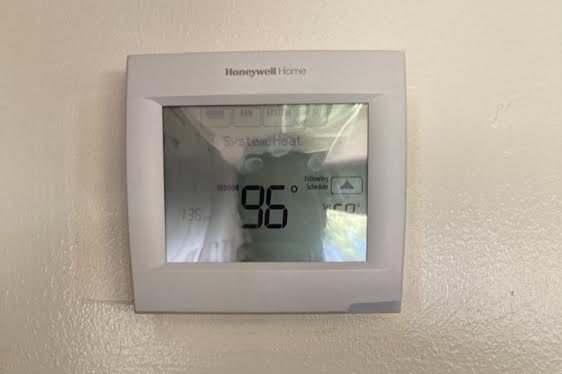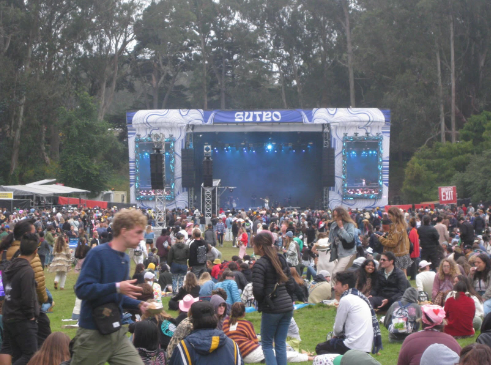
Most students are all too familiar with the feeling of sticky seats and sweat dripping down their foreheads during the hot and humid months of summer at school. Yet, action to improve these conditions can be taken with a vote for Measure W.
Measure W is a bond measure that will improve funding for campuses in the Sequoia Union High School District by focusing on adding air conditioning and ventilation, improving beautification, adding better security systems, and removing hazardous materials on campus. According to The Daily Journal, the bond’s proposal is asking voters to approve a “$591.5 million bond with a tax rate of $14 per each $100,000 of a property’s assessed valuation.” Many community members agree with this bond’s proposal and support it because their taxes will help all students in high school.
While many community members are voting for Measure W for high school students, a similar bond is being proposed for the K-8 Redwood City district called Measure S.
Measure S is similar to Measure W but is directed towards the K-8 district to get a “$298 million bond measure with a tax rate of $24 per $100,000 of a property’s assessed valuation, bringing in about $16 million annually.” These bonds are currently being advertised so individuals can vote for them in the upcoming election but many individuals still have questions about what the money will actually do for schools.
According to the Sequoia Union High School District, the money will go toward “rebuilding or building classrooms for music, art, performing arts, labs for technology, engineering, and science.”
The bond is directed toward making improvements and making sure buildings are safe. Furthermore, some money will also go towards rebuilding “the district’s administrative office at 750 Branford St. in downtown Redwood City.”
By improving school conditions, students will feel more encouraged to attend school. Instead of the struggle of sweat-stained seats or blistering cold rooms, students can focus better in comfortable learning environments. This in turn can help students produce better work and motivate healthy learning habits. Sophomore Brooke MacDonald agrees that the few buildings on campus with air conditioning have improved her overall school experience.
“Honestly I do like the air conditioning,” MacDonald said. “I don’t know if we have heating, but that could be helpful in the winter. I think that some buildings are better isolated than others. The J-wing is pretty nice.”
Passing Measure W would also provide additional improvements to technology throughout the school, which would help to modernize students’ learning experience. As twenty-first-century students, it’s important to alleviate students’ learning through classrooms built for the time period. These modifications in technology will improve the efficiency of teaching for students and teachers alike.
“I hope eventually, they could add more new technology to the buildings to make the facilities easier to learn [in] and focus on work,” MacDonald said.
Modernization of technology at school will further diversify the classroom curriculum to create more modern courses. While many of Woodside’s newer structures such as the Science Technology Engineering and Mathematics (STEM) and the Digital Arts buildings have allowed Woodside to offer courses in engineering, audio production, filmmaking, and photography, there are still many classes Woodside could offer with updated classrooms.
“I think that having facilities [such as the] engineering building [meant for] the environment of teaching would help us learn better,” MacDonald said.
Updating schools will moreover prioritize teachers working spaces to assist in teaching and learning. Social studies teacher and football coach Justin Andrews agrees that during the stifling heat of summer, being in an unventilated classroom is the last place students and teachers want to be.
“[During] the summer and fall months certain parts of the campus can get really unbearable,” Andrews said. “[This is] especially [true] in the smaller rooms where everyone’s kind of packed in there. I think it can make it a really tough environment to teach and learn.”
Enduring hot temperatures without air conditioning creates a tough environment to learn in. Coupled with windows and other classroom facilities that don’t work well, the lack of ventilation in classrooms increases the difficulty of teaching and learning.
“Sooner or later it’d be nice to just have air conditioning,” United States History and AP United States History (APUSH) teacher Ramie Macioce said. “I have a recorded picture of 96 degrees and that is just unbearable and unhealthy.”
Measure W will not only tend to students’ needs, but will also help teachers when trying to teach. By creating classrooms that will mold to teachers’ needs, teachers can be more equipped to teach students. This will improve learning development in classrooms and create a more lively environment for students.
“Definitely an update of the campus, and some updated classroom space,” Macioce said. “In my classroom, I would love [to get rid of] all those cabinets in the back. I don’t really use them, as we don’t use a ton of paper anymore. What I would like is walls of whiteboards so kids could be up moving around and interacting.”
Additional improvements to general school facilities will further help athletic departments at school. Creating dedicated and updated spaces for athletes will enhance schools’ sports programs and develop an athletic program that more students will want to be involved in. This can help increase student enrollment and participation in extracurricular activities at schools.
“As a coach, I’d love to see facilities get updated such as the weight rooms [and] the press box on Bradley Field,” Andrews said. “But I have no idea where those [improvements] lie on the totem pole. That’s my kind of personal preference.”
Many opponents of the measure claim that these renovations will cost taxpayers millions of dollars that will ultimately fail to address educational issues. Chris Robell, a Redwood City resident and an outspoken critic of Measure W and Measure S, argues that the $298 million this bond will take from taxpayers doesn’t address the main issues at schools regarding student achievement, retaining teachers, and declining enrollment.
However, for students and staff, this bond will support and help better their learning circumstances at school. Measure W will improve students’ educational opportunities through improvements on campus. Through this bond, high school students will be given better tools and opportunities to succeed at school and will overall benefit from these positive changes. It’s important for members of the Sequoia Union High School District to vote for Measure W as the bond will contribute to students’ learning.
“I would like the community to really vote for it so that we can have an improved, updated [campus],” Macioce said.










